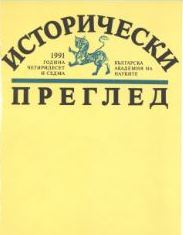Монетите в търговията между Виена и Константинопол през XVIII век
The Coins in the Commerce between Vienna and Constantinople in 13th Century
Author(s): Snezhka PanovaSubject(s): History, Economic history, Modern Age, Special Historiographies:, 18th Century, The Ottoman Empire
Published by: Институт за исторически изследвания - Българска академия на науките
Summary/Abstract: The problem which is an object of the present article is not studied in our and foreign historiography. It is developed on the basis of some unpublished and published sources, but they are not used in this aspect till now. The monetary trade between Austria and the Ottoman Empire is a part of the more common problem of the trade relations between the two countries. The framing of these relations is a basic part of the policy of Austria during the whole 18 century because they are a chief factor for its international politic and economic development. This policy, however, meets the rivalry and the resistance of the Western Great powers – France, England and the Netherlands – which take their place in the trade of the Levant a century before Austria. As a result of this in the opinion of the Austrian government till the end of the century the country maintains passive balance of trade in this commerce. However this conclusion is imaginary, because Austria controls its balance of trade namely through the monetary trade. The information from the sources shows that in the center of this commerce between Vienna and Constantinople stay the countries from South-Eastern Europe, respectively the Bulgarian lands: with their merchants, trade roads, centers and markets. Organized in trade associations and mastered in the juncture of the money-change deals, they are the main factor and motor of the import – export monetary trade. The importance of the monetary trade for the Ottoman Empire – the Bulgarian lands – is a two-way process: it influences positively the formation of the commercial bourgeoisie, activates the markets and their incorporating to the European commerce; and from the other side the levelling of the balance of trade through the monetary trade puts in dependence the economic development of the Ottoman empire as a whole, and in a more concrete way – the countries from the South-Eastern Europe.
Journal: Исторически преглед
- Issue Year: 1991
- Issue No: 10
- Page Range: 3-20
- Page Count: 18
- Language: Bulgarian
- Content File-PDF

